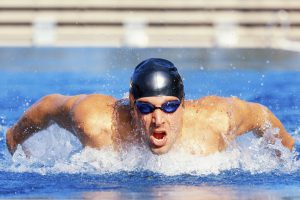August 11, 2016, by Guest Author
Not your Cup o’ Joe? Cupping, Olympics, and health.
It has caused a stir in Rio since Michael Phelps emerged with dark circles on his skin. Whatever your take on Cupping what does it mean for ethics and morality in medicine? Roger Kerry, Associate Professor in Physiotherapy and Rehabilitation Sciences at the University of Nottingham delivers his verdict.
The Olympics are a curious time for physiotherapists and medics interested in the sportier side of things. For those health professionals who are part of the Olympics team, this of course can be a career highlight. For those watching from a-far there is one issue which strikes heightened attention and commentary: what will this year’s Olympic miracle treatment be? London 2012 was the Year of K-Tape. Athletes would strut around covered head-to-toe in brightly coloured tape, reportedly to help them perform better and ease their pains. Here is my view on all that business. So far this year not much taping is going on. So what will be the favoured treatment choice of the rehabilitation fashionistas this time around?
For the first day or so of the events, there wasn’t much being given away. A couple of divers with small strips of beige tape (The 2012 brightly coloured stock must have run out) and not much else. Have the rehabilitators reverted back to the basics of injury management, resurrecting the use of principled training programmes, education, and load management to help its athletes? How boring. But then, boom, out comes Phelpsie.
Is this the human equivalent to crop circles?
Shoulders covered in perfect dark circles on his skin. What’s going on? Is this the human equivalent to crop circles? Has he been abducted by aliens who have marked him for research purposes and sent him back to experiment with Earthlings? No, these are the marks of cupping. This is an ancient therapeutic technique which involves glass (or whatever) cups being held in place on the skin by suction. Healing and pain relief are among its traditionally reported benefits. Since this image of Phelps came out, the world of social and conventional media has entered into a world of frenzy discussing the whys and wherefores of the use of cupping. There is no need for another blog on the most visible “I’m right, you’re wrong” debate, but I do think there are some interesting phenomena which arise from all this.
First, this has added more fuel to the already fiery conversations about the understating and use of evidence-based interventions. The “it does work” camp claiming therapeutic effectiveness based on their own observations and the long-standing use of cupping throughout history. The “it doesn’t work” camp waving arms about and shouting that there are no high-quality randomised controlled trials to support its effectiveness, and indeed plenty of population data to support the claim that it is in fact not effective. The intriguing metanarratives from this are about the professional athlete’s position with regards to evidence-based medicine. Are they exempt from the strict scientific criteria for effectiveness? With so many controls on drugs, should we be permitted to try anything as long as it gets them back on the track? This all leads to questions not only about the interpretation of evidence-based medicine, but also of ethics and morality. If an athlete and/or their therapist/doctor claim better performance because of treatment X, is it morally OK to continue with that in the presence of data which refutes its clinical effectiveness? What does this say about “evidence” and what does it say about situational healthcare?
Second, what are the psychological and social consequences of all this? Well, for sure, physiotherapists around the world will be inundated with cupping requests from their patients. What should the ethical therapist do? And what about resources? Goodness knows how much the NHS spent on leukotape (a precursor to K-tape) in the mid-nineties after Pat Cash appeared at Wimbledon with a strip of it across his knee. Do media and personalities have more impact on health choices than NICE and The Cochrane Collaboration? The world of pain and injury management seems to be just gaining traction with regards to active and educational management of painful condition. Cupping is clearly a passive intervention which may re-inforce aberrant and negative beliefs a person may have about their painful experience. But further, what does this say about athletes, their bodies, and their performance? If cupping is claimed in the athletic environment to have performance enhancing effects, will this be seen as a ‘replacement’ for other things athletes do to improve performance, like training? I very much doubt this last point would manifest in full force, but the intervention is already being framed in the marginal gains dialogue. Care must be taken in differentiating marginal gain interventions from training surrogates.
So what really does motivate health treatment choices? The answer is evidently far from straightforward. What I do know though is that I can’t wait until Tokyo 2020. Bring on the multi-coloured magnetic electro-stimulation pulsating cryo-crystal techno-beat neck collars.
No comments yet, fill out a comment to be the first



Leave a Reply